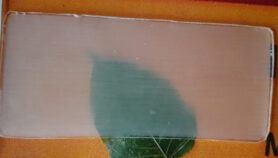By: S. Singh
Send to a friend
The details you provide on this page will not be used to send unsolicited email, and will not be sold to a 3rd party. See privacy policy.
[INDIA] Fool’s gold, a common mineral often mistaken for gold ore, has found new worth as raw material for a new type of eco-friendly and efficient storage battery, according to researchers in India.
The mineral, also called iron pyrite, crystallizes from iron and sulphur deposits. The researchers say that batteries made from iron pyrite nanocrystals are lightweight and portable, allowing it to be used in rural settings as well as for strategic applications.

“In its present laboratory prototype, the battery powers solid-state electronic devices and electric motors,” says Mainak Das, associate professor at the Indian Institute of Technology- Kanpur (IIT-Kanpur), and an author of a study on the finding published online February in RSC Advances.
“We believe, when the whole world is scouting for sustainable, multi-functional energy materials, this discovery could breathe a new wave of enthusiasm towards this ancient ‘three atom molecule’,” Das tells SciDev.Net.
To assemble the prototype battery, the IIT-K team, supported by the Solid State Physics Laboratory, Indian Institute of Engineering Science and Technology (IIEST), West Bengal, used graphite sheets as current collectors, nano iron pyrite coated with poly aniline as the electrode, and a non-corrosive, bio-compatible electrolyte gel.
“This is also the first time that we have shown that iron pyrite can be used both as a cathode and anode,” says Sabysachi Sarkar, department of chemistry the IIEST."It takes 30 minutes to charge the battery for the first time. Subsequent charging for two charge storage devices in a series circuit takes 10 minutes and can power an LED can be lit for 45 minutes,” says Amarish Dubey of IIT-K’s design programme and co-author of the study.
The researchers say that refinements of the battery will open up new avenues in the field of sustainable charge storage devices and low-power electronics.
“Finding any new material that ensures sustainable development is welcome,” says environmental economist Joyashree Roy of Jadavpur University. “Here you have a method that promises a sustainable energy system,” she says.














